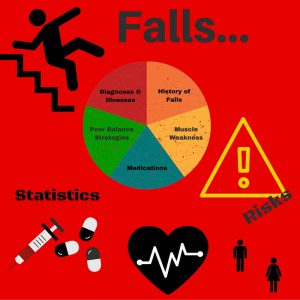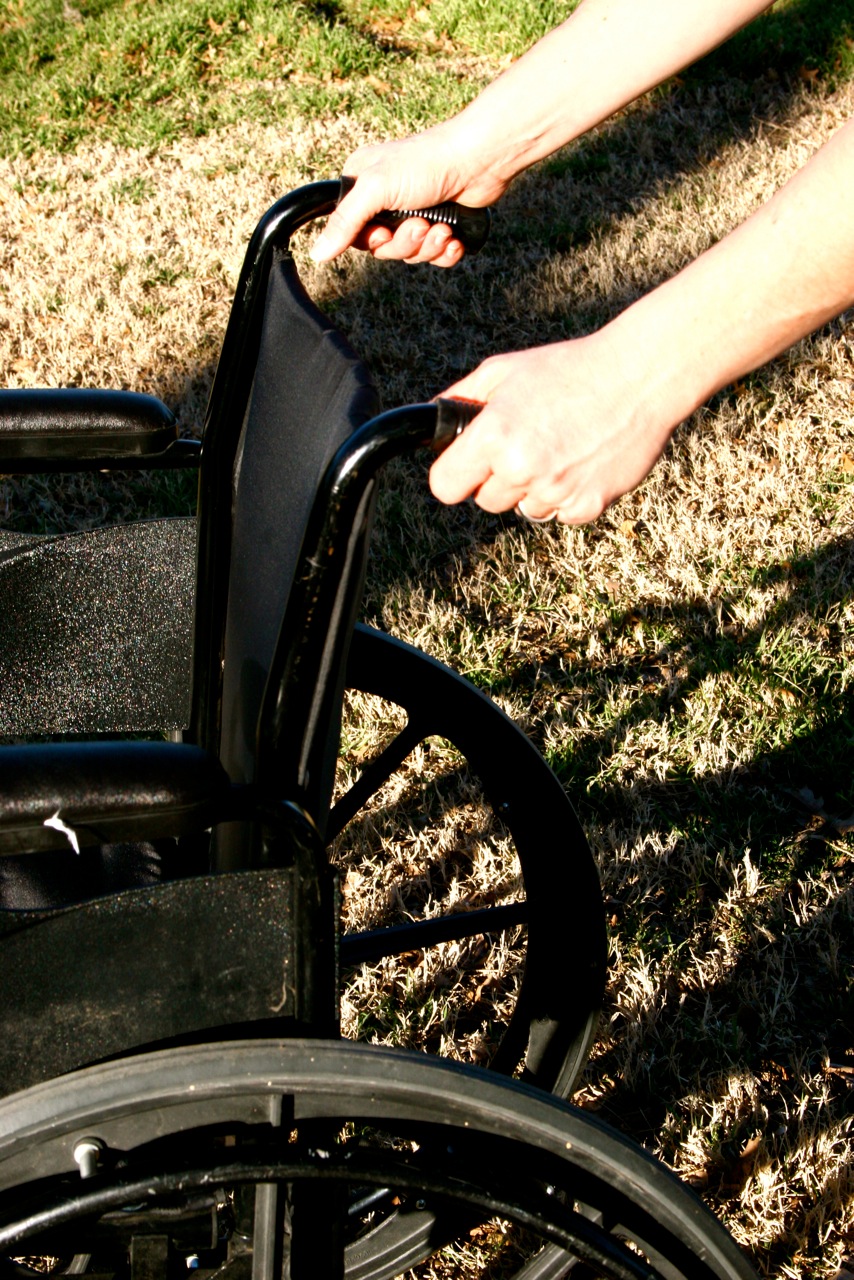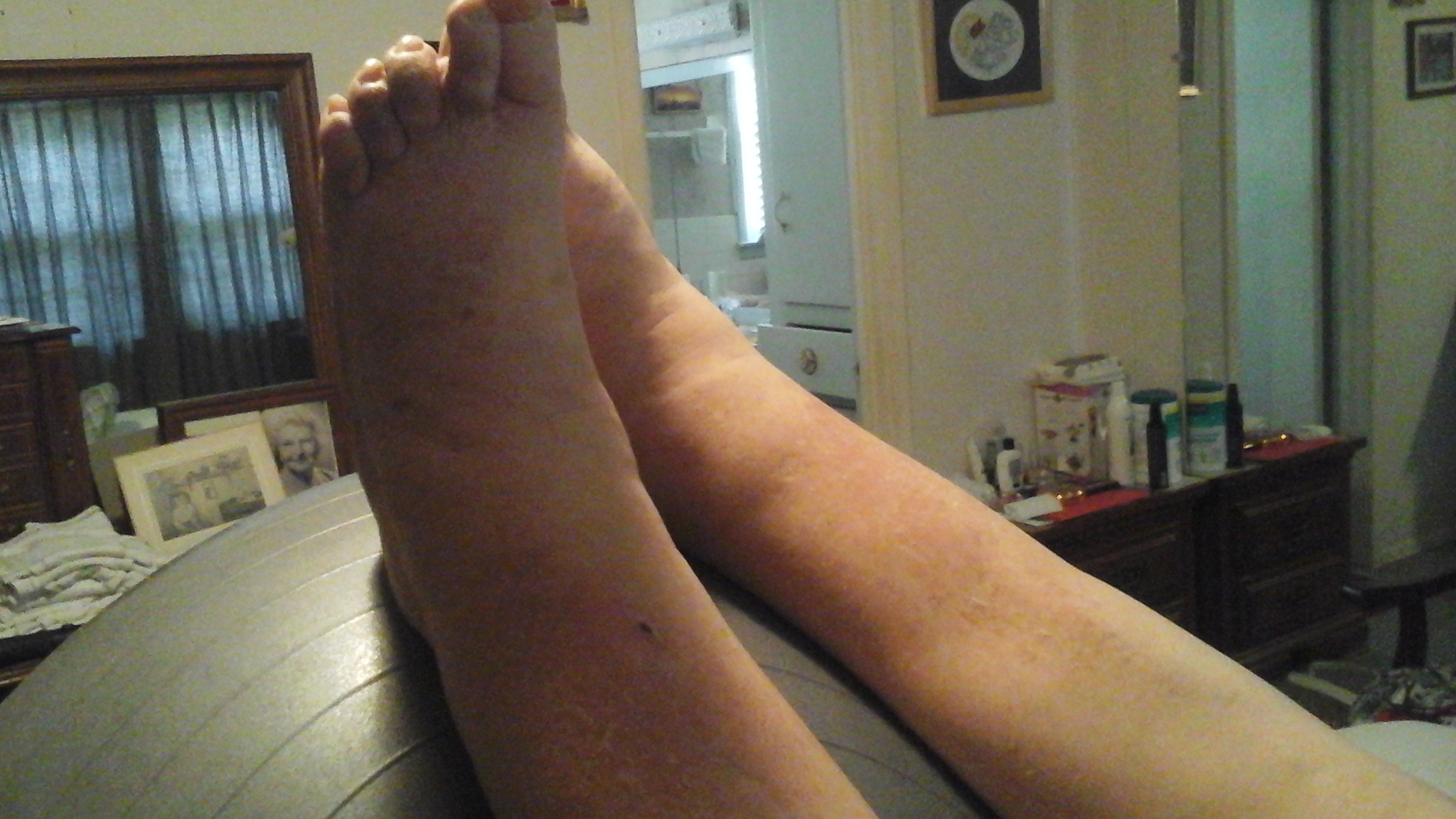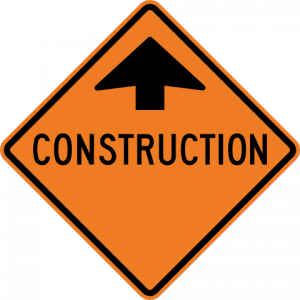Slips, Trips and Falls–Are You At Risk?
Falls Prevention Risk Assessment & Tips
Welcome,
Slips, trips, and falls can be scary and even change someone’s quality of life and life expectancy–especially later in life. With that in mind, I want to provide some fall risk assessment tools as well as some tips to decrease the risk of falls based on each of the assessment tools. Should you have any questions, please feel free to leave a comment/question below and I will respond within 48 hours.
1. How many times can you stand without using your hands from a folding chair?
When you stop using your hands to stand up, you force the muscles in your legs to do all the WORK to stand up. If your legs are too weak to stand up without using your hands, you have an increased risk of falling. According to STEADI (Stopping Elderly Accidents, Deaths & Injuries) established by the Centers for Disease Control and Prevention, there is an increased risk for falls based on an individual’s age, gender, AND how many times he/she can stand up from a folding chair in 30 seconds without using his/her hands. In general, men and women 60 to 84 years old should be able to stand a minimum of 10 times in 30 seconds without using their hands, to be at a lower risk for falling!
Therefore, to decrease falls associated with weakness during hands-free Sit to Stands, I recommend completing sit to stand exercises from different surfaces such as a swiss ball, couch, toilet seat, bed and rocking recliner.
2. Do you have weak ankles causing weak balance strategies?
When your feet hit the ground, everything changes! In other words, your feet and ankles are the 1st part of your body contacting and interacting with the ground. If your ankles are weak (you cannot maintain standing before, during or following 20 standing heel raises and toe raises without holding onto a walker, counter, or someone else for support), then your fall risk is high. Have you watched people working out at a gym? Most of the time, you see people working out their stomach, legs, arms, and back. Few people spend time strengthening their ankles–the first joint responsible for standing balance–and then they wonder, “Why am I falling?” Your feet/ankles are just like the tires on a car: 1) to run/walk properly you need good shoes (tire tread), 2) keep your ankle balance strategies in good condition (tire/wheel alignment), 3) and expect changes in the terrain such as gravel, loose floor rugs, water, etc (snow/rain/road construction) to require increased strength and balance to safely walk. Just like poor tires or faulty alignment in a car can result in an accident, weak ankle strategies, and poor foot/ankle support can result in an increased fall risk.
What is a balance strategy? When the feet contact the ground, the ankles absorb and adjust to the terrain by movements in 4 directions: up, down, and sideways to the inside or outside of the foot. In other words, the ankle normally moves in a circular motion, unlike the knee that only bends and straightens. Therefore, when the foot hits the ground, the circular movement of the ankles work to keep you up (balanced in standing/walking) against gravity. If you are pushed or walk on rough surfaces (dirt, hills, thick-padded carpet, etc…), the ankles respond and attempt to keep you upright. However, if you are pushed a little harder or walk on rougher terrain, the ankles transfer the extra balance demands from the ankles up to the hips because the hips are the only other joint in the legs capable of circular movements.
The movements of the ankles and hips to keep you upright during standing and walking are known as the ankle and hip balance strategies. However, there is another balance strategy known as the “stepping balance strategy.” When the ankles and the hips are weak or can’t move due to stiffness/injury/surgery, the last resort for maintaining balance and not falling comes from the “stepping strategy.” In other words, you use the “stepping balance strategy” by taking quick steps to decrease the risk of falling and try to correct/maintain your balance when the ankles/hips cannot overcome the effects of gravity and loss of balance. Consequently, keeping the ankles/hips strong and flexible as well as using appropriate footwear is very important for fall risk management.
Therefore, if you have an increased risk of falls associated with weak ankle and hip balance strategies, I recommend doing standing exercises with VERY limited use of the hands.
3. How many times have you fallen in the past day, week, and month?
Anyone is capable of tripping, slipping and falling once in a while. However, if you are falling multiple times over a short period of time (i.e. 2 or more times in a day), the risk for additional fall(s) is higher! Changes in medications, diabetic complications (hypo/hyperglycemia), inner ear infections/vestibular disorders (BPPV), infections and other medical problems can increase the frequency and risk of falls in the elderly.
Having increased frequency of falls due to medical conditions should be addressed by your doctor. Do not change your medications without consulting your doctor. I also recommend an evaluation by an Ear, Nose, and Throat Specialist to rule out any inner ear based balance deficits (BPPV). Being able to crawl or move around on the floor is a skill I teach in the home so my patients don’t get TRAPPED on the floor if he/she falls, HAS NOT sustained an injury, and needs to either access a phone or get off the floor.
3. Anemia and Urinary Tract Infections
Anemia, low iron, can increase your fall risk. Think of iron as a tug boat and oxygen as the large ship needing to get to port. When large boats are too large to safely enter a harbor/port, they use a tug boat. Oxygen is carried/delivered in the body by “clinging” to iron in your blood–just like a tug boat! So, if you are anemic (have low iron levels), then you do not have enough tug boats to carry/deliver the cargo ships full of oxygen to your body’s muscles and vital organs. It does not how much oxygen is available–have large quantities of ships needing to get to port–if you do not have enough iron–tug boats in your blood–to deliver the ships (oxygen) throughout your body. How do low iron and low oxygen levels increase the risk for falling? Low oxygen from low iron causes symptoms such as muscle fatigue, muscle weakness, shortness of breath, and possible dizziness–especially during higher oxygen-demanding activities such as standing and walking.
Another common illness that can increase the risk of falls is urinary tract infection. The kidneys and urinary tract system filter (clean) the blood and then “flushes” the dirty contents out of the body through the urine. If you have an infection of your filtration system (the filter is clogged and dirty), the blood is not effectively cleaned. The dirty blood circulates all over the body to all the muscles, brain, and organs. Poorly filtered blood associated with having a urinary tract infection can cause confusion in the brain, fatigue/weakness in the muscles, and increased opportunities for falls because of frequent/often fast trips to the bathroom.
A urinary tract infection is similar to an air conditioner with old and clogged up filters. Air conditioners operating with dirty filters still work but it takes more energy and increased time to cool the air. Similarly, the body will continue to move and operate with dirty blood associated with a urinary tract infection, but there are consequences (symptoms) of poorly filtrated blood.
In the aging adult, unexplained and sudden confusion or decreased concentration can be the first sign of a UTI even before the other symptoms (burning, foul/strong urine odor, urinary urgency and increased frequency of urination) are present because the brain does not like to operate on dirty (poorly filtered) blood. If my patient has a hard time following directions, requires increased time to read their home exercise program, or is easily distracted from one treatment to another, I suspect a urinary tract infection because the brain is running on dirty blood. I also suspect a urinary tract infection if my patients complain about feeling really tired, are moving slower, and need frequent rests because the muscles including the muscles responsible for breathing are operating on dirty blood as well.
If my patients have an increased risk for falls associated with anemia or a urinary tract infection, I recommend appropriate medical intervention followed by a gradual resumption of physical activity that includes frequent rests.
Like Taking Candy From a Baby…Why Dizziness Occurs When Standing Up
Medical conditions, such as heart-related problems both with and without breathing disease/disorders (COPD, Emphysema, Asthma) can increase your risk for falls. If you get dizzy when you stand up and walk, then the risk of falling is higher–especially if you start to walk before the dizziness goes away. The easiest way to explain what is going on is this: When you are lying in bed, your heart beats easily because it is not fighting/competing with the force of gravity. When you sit up, the heart must react and overcome the effects of gravity by either beating with more force (pressure) or by increasing beats per minute (heart rate). In the same manner, your lungs are under the same demand against gravity to supply the brain with oxygen. The weaker your heart/lungs, the longer the dizziness lasts because it takes more time for your heart/lung to adjust and overcome/overpower the effects of gravity to get oxygen-rich blood to the brain. Once the brain gets the oxygen it wants/needs, the dizziness goes away! Dizziness is usually worse when you stand up because the force of gravity on your body is larger when you stand up compared to when you rise from lying down.
Your brain is like a toddler and oxygen-rich blood is the brain’s candy! When your brain has all the candy it wants, it allows all the other organs and muscles to have the extra oxygen-rich blood (candy) for digestion, walking, and other activities. Let’s say the brain wants 80% of candy and allows 20% for the rest of the body. When you stand up and get dizzy, the toddler is getting less than 80% so the brain throws a fit! To appease the toddler, the heart and lungs increase the rate and/or effort to supply the toddler (brain) with more candy (oxygen).
If you start to walk while the toddler (the brain) is still not getting 80% of the candy (you are still dizzy), the toddler throws a worse fit and starts STEALING the candy (oxygen) from the rest of the body. For example, imagine the toddler looking at the legs and saying, “Hey the leg muscles are really big and by walking those big leg muscles are taking lots of my candy from me–especially when the heart/lungs are trying to overcome the effects of against gravity. So, I am going to take what is mine.” As a result, the brain STEALS/DIVERTS oxygen to itself away from the leg muscles and the legs start to feel weak.
If you insist on walking and using more oxygen, the toddler will resort to making you pass out! By making you pass out, the brain (toddler) quickly gets more oxygen because 1) the muscles in the legs are no longer moving and using as much oxygen, and 2) the heart/lungs no longer have to fight against the force of gravity to supply the brain with oxygen. Ultimately, the toddler (brain) gets what it wants even with poor heart and lung health; however, the brain has caused an increased fall risk either by making the legs weak (forcing you to sit down) or making you pass out! Obviously, there are other illnesses and medical conditions that increase the risk for falls, trips and slips such as Parkinson’s, Alzheimers, Stroke, etc…
5. What might cause a fall in the home or residential care facility?
Poor lighting, loose rugs, wheelchair footrests, oxygen tubing, broken wheelchair brakes/medical equipment, poor quality footwear, and not setting up the environment (medical equipment)/yourself if you are transferring a loved one/or positioning your loved one safely before transferring, lifting and walking can increase the risk of falls.
FALL FACTS & STATISTICS: Healthcare Settings Outside of the Home
There are several reputable sites that provide statistics and data related to falls and the cost of falls in the healthcare industry. According to OSHA (Occupational Safety and Health Administration), “Fall protection is the #1 OSHA violation resulting in 1.7 million WC (Workmen‘s Compensation) claims.” Similarly, Medicare.gov’s website states, “failure to ensure fall risk management with adequate resident supervision and assistance to prevent accidents” is the most common deficiency observed in patient care facilities resulting in increased fall rates in both state and governmental care facilities Moreover, the website for the Center for Disease Control and Prevention, highlights “1 out of 5 falls results in a hip or head injury” and “2.5 million elderly adults are hospitalized every year due to falling.”
Below I have provided a Table with a summary of the information you can access when you visit the website. I wanted to provide a resource for accessing fall risk measures and quality of care measurements in different patient care settings (i.e. Nursing Homes, Assistive Living Facilities, etc…) because there are falls risks associated with the quality of care and the staff to patient ratio when patients are not able to stay in his/her home.
Obviously, falls are expensive and multidimensional, so it’s important to know if you have an increased risk for falling! Please click on any of the links below for additional information available on each of the above-mentioned sites.
| Website Name | Brief Overview/Description of Website Content | Quick Link to Website |
|---|---|---|
| Medicare | Browse/Compare Quality Measures (Fall Rates)and Staff details for different patient care settings (ALF, SNF, NH) | Click Here |
| Healthcare Blue Book | Research recommended costs for medical treatments and surgical procedures | Click Here |
| CDC-Falls/Prevention | Browse fall statistics and fall prevention programs for elderly adults NOT in a Nursing Home, ALF, hospital, or SNF | Click Here |
Falls, slips and trips can occur at any time; however, I hope I have explained some common risks and provided you with some helpful information regarding falls. Please leave a comment or ask a question below and I will be honored to respond as soon as possible. Also, be sure to check my website frequently because I will be adding more helpful tips, tricks and information on falls. You can click HERE to see a video showing how to lift a loved one from the floor if he/she is not injured. I want to thank you again for visiting my site and I look forward to any questions, comments or ideas for future pages, posts, and blogs!
Until then, Stay Safe!!!









